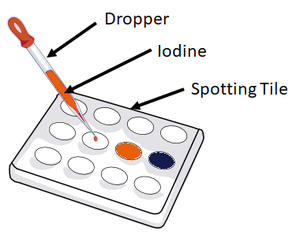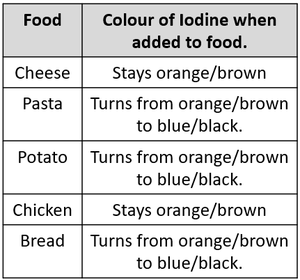Difference between revisions of "Method"
(→Examples) |
|||
| Line 15: | Line 15: | ||
|- | |- | ||
|[[File:IodineStarch.png|center|300px]] | |[[File:IodineStarch.png|center|300px]] | ||
| − | | style="height:200px; width:300px; text-align:left;" | '''Method''' | + | | style="height:200px; width:300px; text-align:left;"|'''Method''' |
: 1. Take a small sample of cheese, pasta, potato, chicken and bread | : 1. Take a small sample of cheese, pasta, potato, chicken and bread | ||
: 2. Place each sample in a different spot on the spotting tile and note their location. | : 2. Place each sample in a different spot on the spotting tile and note their location. | ||
Revision as of 15:50, 28 November 2018
Key Stage 2
Meaning
A method is the set of instructions you follow to complete an experiment.
About Methods
- A method can be followed if you are trying to copy another person's experiment.
- A method can be written if you have created your own experiment and want other people to be able to copy it.
- Methods should be written in the form of "writing to instruct". They do not use any personal pronouns; I, you, he, she, we, or they.
- A method often has a diagram with it to identify how to set up the experiment or name the pieces of equipment.
Examples
| Diagram | Method | Results |
Method
|

